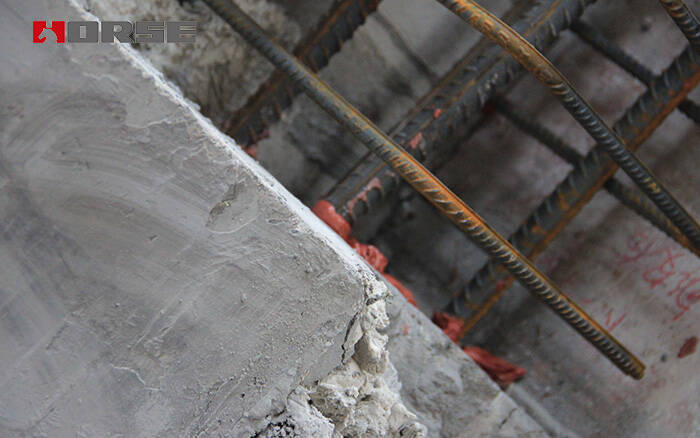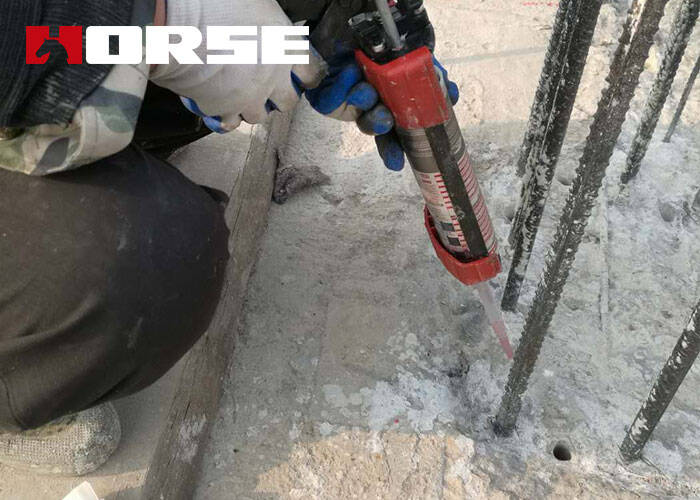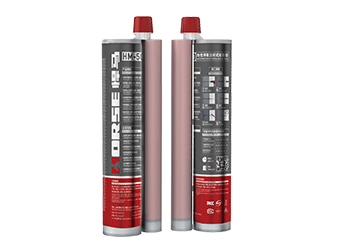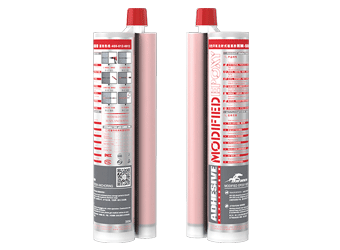Solutions
Horse Construction offers full range of structural strengthening materials with technical supports, documentation supports, products supports, project supports.
Key Points Of Welding Construction After Chemical Rebar

Reinforcement by chemical anchor rebar reinforcement is usually by inserting steel reinforcement into the concrete structure, increasing the cross-section of beams, and adding new beams on columns. In the process of chemical anchor rebar reinforcement and reconstruction, it is sometimes necessary to weld the implanted reinforcement. However, the high temperature generated by welding may adversely affect the bonding properties and load-bearing capacity of the rebar planting glue, causing the chemical anchor rebar to slip, thereby affecting the reinforcement effect.
What is the effect of welding after chemical anchor rebar?
For manual arc welding, the temperature of DC is about 1000~2000℃, while that of AC is 2400~2600℃. The thermal decomposition temperature of epoxy planting reinforcement is generally about 180~300 °C. If no protective measures are taken for direct welding, the colloid will completely lose its adhesiveness, resulting in the anchoring of the planting bar.
To sum up, it is not advisable to weld the bars after planting without any protective measures, and the colloid cannot directly withstand the heat of welding.
How to solve the impact of high temperature welding?
When it is necessary to carry out welding after planting, we can reduce the impact of high temperature welding by reasonably controlling the temperature of the colloid, appropriately increasing the anchoring depth, and using other connection methods.
Reasonably control the temperature of the colloid part
Relevant specifications and expert arguments show that welding is feasible with appropriate protective measures. The principle is to keep the temperature near the colloid in a relatively safe range through various measures, so as not to affect or less affect the performance of the colloid.
If individual steel bars really need post-welding, in addition to the cooling measures of intermittent welding, the distance between the welding part and the top surface of the glue injection hole should not be less than 15d, and should not be less than 200mm. At the same time, the exposed roots of the planted tendons must be wrapped with multiple layers of wet wipes impregnated with ice water.
For batches of rebars, the principle of first welding and then rebars is still adhered to to ensure that the adhesive layer will not be damaged due to high temperature.

Properly increase the anchoring depth
The method of appropriately increasing the anchorage depth can not only improve the ultimate tensile bearing capacity of the planting bar, but also reduce the slippage of the planting bar, thereby reducing the influence of post-welding.
Take other connection methods
Other connection methods can be adopted, such as binding and overlapping, mechanical connection.
Binding and lap joint: Rebar lap joint means that two steel bars have a certain overlapping length with each other. The connection method of tying wire is suitable for the connection of smaller diameter steel bars, and is generally used for slab bars and wall steel bars. The specification stipulates that when the diameter of the tensile steel bar is greater than 25 and the compression steel bar is greater than 28, it is not appropriate to use the lashing lap joint.
A. Advantages: simple construction, high efficiency, and no damage to steel bars.
B. Disadvantages: The waste of steel bars is too large, the skeleton is easily deformed, and the force transmission performance is the worst.
Mechanical connection:
Mechanical connection of steel bars is a connection method in which the force in one steel bar is transmitted to another steel bar through the mechanical occlusion of the steel bar and the connector or the pressure-bearing effect of the end face of the steel bar.
A. Advantages: easy operation, fastest construction speed, continuous and infinite connection, best force transmission performance, super strong connection, stable and best quality.
B. Disadvantages: In comparison, the main cost is higher.
The choice of connection method needs to be combined with the actual situation, with reference to standard specifications, etc., to make a reasonable choice.
Chemical anchor rebar works should be welded first and then planted as much as possible. If the rebar needs to be welded after welding, intermittent welding can be used, the distance between the welding part and the top surface of the glue injection hole can be increased, and the exposed roots of the rebar can be wrapped with multi-layer wet wipes impregnated with ice water. Or use other appropriate connection methods, etc., so as to achieve a good planting effect.
You can find anything here you are in need of, have a trust trying on these products, you will find the big difference after that.

High strength, unidirectional carbon fiber wrap pre-saturated to form a carbon fiber reinforced polymer (CFRP) wrap used to strengthen structural concrete elements.

two-components modified epoxy resin adhesive, with high quality plastic tube, double cartridge package

Two-components modified epoxy resin adhesive, with high quality plastic tube, double cartridge package for anchoring